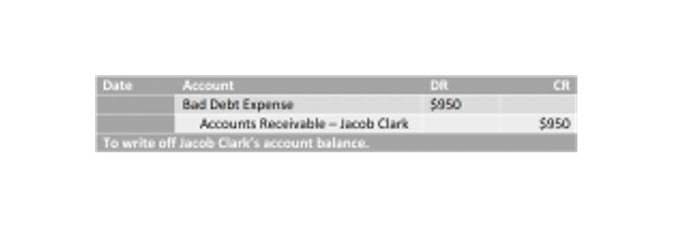Ratios: Times Interest Earned TIE Video Tutorials & Practice Problems

This Fed study means that the TIE ratio (ICR ratio) can also predict the probability of overall “default and financial distress” of a business, not only its ability to pay interest on debt obligations. But you can rely on other ratios too that analyze the payment of both interest expense and principal on debt. However, just because a company has a high times interest earned ratio, it doesn’t necessarily mean that they are able to manage their debts effectively. If the Times Interest Earned ratio is exceptionally high, it could also mean that the business is not using the excess cash smartly. Instead, it is frivolously paying its debts far too quickly than necessary. For example, if you have any current outstanding debt, you’re paying interest on that debt each month.
What is a Good TIE Ratio?
Businesses that have a times interest earned ratio of less than 2.5 are considered to be financially unstable. If your business has debt and you are looking to take on more debt, the interest coverage ratio will give your potential lenders an understanding of how risky a business you are. It will tell them whether you would pay back the money that they are lending you. The times interest earned ratio formula is expressed as income before interest and taxes, divided by the interest expense. But in the case of startups, and other businesses, which do not make money regularly, they usually issue stocks for capitalization.
Steps to Managing Your Stock Portfolio Like a Pro
Not only does this translate into more money available to repay the principal on its loans, it also means there’s more cash to put toward expanding operations and increasing investor value. Using Excel spreadsheets for calculations is time consuming and increases the risk of error. If any interest or principal payments are not paid on time, the borrower may be in default on the debt. If the debt is secured by company assets, the borrower may have to give up assets in the event of a default. To calculate the ratio, locate earnings before interest and taxes (EBIT) in the multi-step income statement, and interest expense. A multi-step income statement provides more detail than a traditional income statement, and includes EBIT.
Use spend management software

When it comes to strategic planning, management leverages the TIE ratio to make informed decisions about operating costs, investment, and growth. An adequate TIE ratio supports decisions aimed at expansion, given that it shows the company’s resilience in covering additional interest expenses from current operations. A higher Times Interest Earned Ratio indicates a company is more capable of meeting its interest obligations from its current earnings, implying lower financial risk. In contrast, a lower ratio suggests a company may face difficulties covering interest payments, which could signal higher credit risk.
- This increased attractiveness can drive up demand for the company’s stock, potentially leading to an increase in its stock price and overall market value.
- When you sit down with the financial planner to determine your TIE ratio, they plug your EBIT and your interest expense into the TIE formula.
- If operating expenses increase, current earnings may decline, and the firm’s creditworthiness may be affected.
- TIE is calculated as EBIT (earnings before interest and taxes) divided by total interest expense.
- A stable or improving TIE ratio is generally interpreted as a sign of sound financial health, possibly leading to a lower risk of bankruptcy.
- Another strategy is to use available cash flow to pay down debt faster and eliminate some of your interest expense.
- A good TIE ratio is subjective and can vary widely depending on the industry, economic conditions, and the specific circumstances of a company.

Spend management software gives businesses a more comprehensive overview of cash flow and expenses, and Rho fully automates the process for you. Companies may use earnings to pay dividends to shareholders, or retain earnings to fund business operations. Ideally, a business should generate enough earnings to pay for interest expenses and to fund other needs.

To give you an example – businesses that sell utility products regularly make money as their customers want their product. If you’re reporting a net loss, your times interest earned ratio would be negative as well. However, if you have a net loss, the times interest earned ratio is probably not the best ratio to calculate for your business. However, it’s important to compare a company’s TIE ratio to industry peers and historical performance for a more accurate assessment. That’s because the interpretation of a good TIE ratio depends on the industry, company size, and specific circumstances and requires a nuanced analysis that takes into account various factors.

On the other hand, a low TIE indicates higher risk, suggesting that operational earnings are insufficient to cover interest expenses, potentially leading to solvency concerns. The times interest earned ratio is also somewhat biased towards larger, more established companies in safer sectors due to credit terms and interest rates. Imagine two companies that earn the same amount of revenue and carry the same amount of debt. However, because one company is younger and is in a riskier industry, its debt may be assessed a rate twice as high.
What Does a High Times Interest Earned Ratio Signify for a Company’s Future?

The times interest earned (TIE) ratio is a financial metric that measures a company’s ability to fulfill its interest obligations on outstanding debt. It is calculated by dividing a company’s earnings before interest and taxes (EBIT) by its interest expense within a specific period, typically a year. Divide the company’s earnings before interest and taxes (EBIT) by its interest expense to calculate the TIE ratio. This quantitative measure indicates how well a company’s earnings can cover its interest payments. A higher TIE ratio suggests that a company is more capable of meeting its debt obligations, which typically translates to lower credit risk and better borrowing conditions.
The Purpose of TIE Ratio
- The Ascent is a Motley Fool service that rates and reviews essential products for your everyday money matters.
- Solvency ratios determine a firm’s ability to meet all long-term obligations, including debt payments.
- While TIE exclusively evaluates interest-payment capabilities, it is often considered alongside other financial ratios to provide a comprehensive view of a company’s financial health.
- While this ratio does show you how much of a company’s leftover earnings are available to pay down the principal on any loans, it also assumes that a firm has no mandatory principal payments to make.
- Conversely, a low TIE ratio may signal that an organization should prioritize improving its revenue streams or reducing operating costs before committing to significant expenditures or new debt.
- The Times Interest Earned Ratio is an essential financial metric measuring a company’s ability to fulfill its interest payments on outstanding debt.
They will start funding their capital through debt offerings when they show that they can make money. In this case, lenders use the Times Interest Earned Ratio to check if the company can afford to take on additional debt. Efficient management of working capital, which includes managing cash, accounts receivable, and inventory, is essential. Freeing up cash through optimized working capital practices ensures that a business has the liquidity to meet interest payments.
Fast, Free & Trustworthy Stock News Apps Tested 2024
If a business takes on additional debt after an increase in interest rates, the total annual interest expense will be higher. If operating expenses increase, current earnings may decline, and the firm’s creditworthiness may be affected. The debt service coverage ratio determines if a company can pay all interest and principal payments (also called debt service). The times interest earned formula is EBIT (company’s earnings before interest and taxes) divided by total interest expense on debt. Debts may include notes payable, lines of credit, and interest obligations on bonds.
